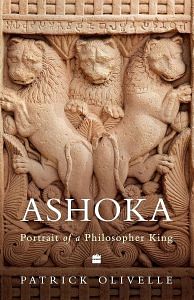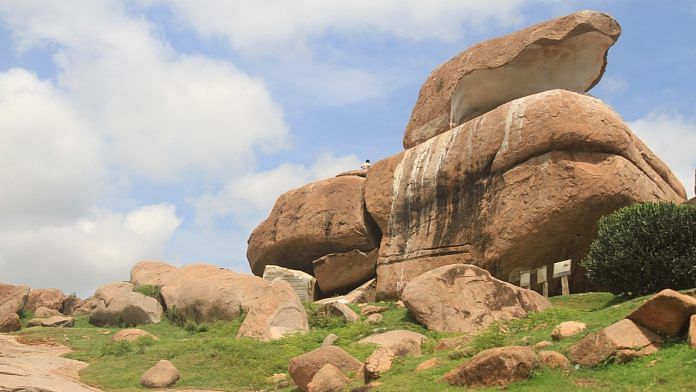Ashoka reveals that he was aware of the social and religious makeup of various countries. In Rock Edict XIII, for example, he says that there is no land where the two classes of religious people—Brahmins and Sramanas—are absent, but quickly adds an exception. They are not found in the Greek kingdoms beyond his north-western border. He notes, however: ‘Yet even where they are not found’—presumably in the Greek territories—‘there is no land where human beings are not devoted to one Pasanda or another.’ So, Pasandas, discussed in Chapter 11, are found even among the Greeks. Here, Ashoka is making a broad-brush statement about a marked difference in the religions and religious organizations between his own country and the countries of West Asia.
Moving beyond the religious, however, the pickings are meagre. As I will discuss in greater detail in Chapter 9, the social groups encompassed by his notion of dharma are mostly familial or broadly within the family orbit. These include persons superior to the individual who is the target of Ashoka’s instruction on dharma: mother, father and elders; persons broadly at the same level: relatives, friends, acquaintances and associates; religious persons: Brahmins and Sramanas; and inferiors: slaves and servants. This is an interesting social circle and many of those included are unremarkable.
Two categories, however, throw some light on Ashokan society: slaves and servants. The terms used here, in Sanskrit ‘dāsa’ and ‘bhṛtaka’, point to two servile classes. The latter refers to workers who were paid for their services, but were technically free individuals, although it is impossible to say how truly free they were. Could they leave one master and sell their services to another? Or were they indentured? Slaves, on the other hand, were owned by the individuals who are the target of Ashoka’s dharma instructions. Slavery was thus a legally recognized and socially sanctioned institution in Ashokan society, as it was in many other ancient societies. It carried no moral opprobrium, even for Ashoka, who presented himself as a paragon of virtue and moral rectitude. Later Sanskrit legal texts present complex categories of slaves, but one stands out with respect to Ashoka: people captured in war and reduced to slavery. Ashoka in Rock Edict XIII dealing with the Kalinga war lists among the enormous number of war casualties the 150,000 people who were ‘carried away’. The word used is ‘apavaha’ (Sanskrit: apavāha), which has the connotation of not simply deportation, as often translated, but of carrying away by someone, clearly pointing to people being in some way enslaved. These two classes of people probably formed part of the household of the person owning or employing them. They were housed, clothed and fed by the householder. The servants, thus, were not simply self-employed workers who went home in the evening. The legal treatise of Apastamba, belonging roughly to the same period as Ashoka, points out the obligation to feed slaves and servants, using the term ‘karmakara’, ‘worker’: ‘If he wants, he may deprive himself, his wife, or his son, but never a slave or worker.’
Also read: Making Ashoka Great Again. New book picks up where Romila Thapar left
The picture we get from Ashoka’s writings is that his empire was ethnically quite diverse. These ethnic groups were identifiable demographically and had ethnic names. Ashoka mentions nine such groups: Kambojas, Gandharas, Ristikas and Nabhapanktis in the northwest; Paladas, Bhojas, Andhras, Kalingas and Pitinikas in the Deccan (see the Map). Unfortunately, he does not provide any information about their cultures, languages and ways of life.
The most instructive aspect of Ashoka’s statements about society, however, is what he does not say. His silence says a great deal, especially with respect to ancient Indian social structures. For example, he makes no mention of the social divisions and roles we have been trained to assume existed in ancient India. The picture of ancient Indian social organization given in learned books and popular imagination is the same. It is presented by the historian Gavin Flood in an introductory book on Hinduism: ‘Vedic society … was divided into four classes (varṇas), the Brahmans, the Nobles or Warriors (rājanya, kṣatriya), the Commoners (vaiśya) and Serfs (śūdra).’ Similar portrayals are found in most textbooks on ancient Indian history, culture and religion. If such a fourfold hierarchical structure existed in Ashoka’s India, or if individuals during Ashoka’s time identified themselves according to this social classification, Ashoka seems either not to have been aware of it or not to have thought it to be significant. The very term ‘varna’ or any of the names of the three varnas, Kshatriya, Vaisya and Sudra, are completely absent in Ashoka’s vocabulary. His extensive discussion of social relationships in the context of the practise of dharma takes no account of the varna system. The only member of that system mentioned by Ashoka is the Brahmin, but he is mentioned in the context of religious organizations called Pasandas and not as a social and demographic group. Further, Brahmins are always contrasted not to the other three varnas, but to wandering ascetics or Sramanas, with whom they form what Ashoka regarded as the broad category of religious professionals. If the varna system was internalized by the population or the ruling elite, or if it was a way for people to think about social roles and hierarchies, then it would have been natural for Ashoka, at least sometimes, to pair Brahmin with the other three varnas, something he never does. It is always the Sramana who is paired with the Brahmin.
What are we to make of it? Simple silence, the absence of any reference, cannot by itself prove that the institution of varna did not exist during the time of Ashoka. Yet, we should begin to question whether the sources that present this fourfold social division, sources that are the basis for contemporary textbook descriptions of ancient Indian society, are reliable. They are, for the most part, authored by Brahmins, who have historically been placed at the summit of this fourfold hierarchical structure. Are they presenting an ideology garbed in the clothes of sociology? Is the varna system aspirational and prescriptive rather than descriptive? Ashoka’s silence, I think, is quite eloquent with respect to the historicity of the varna system.
 This excerpt from ‘Ashoka’ by Patrick Olivelle has been published with permission from Harper Collins.
This excerpt from ‘Ashoka’ by Patrick Olivelle has been published with permission from Harper Collins.



